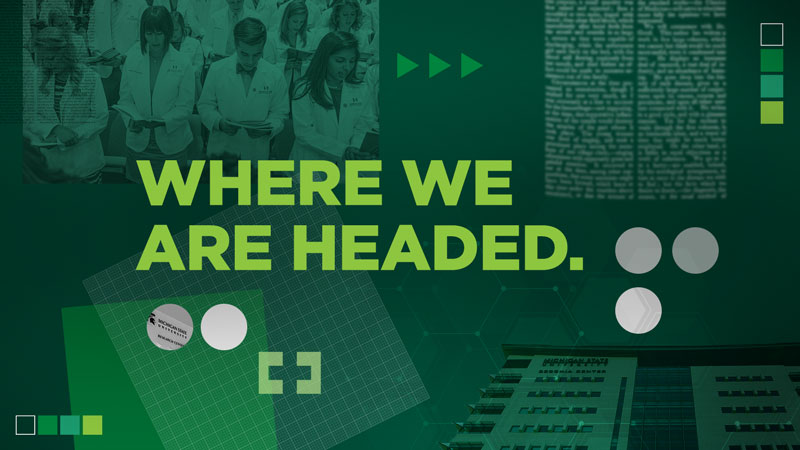Where We Are Headed

The College of Human Medicine faces the inherent complexity of having multiple missions (comprised of 800 medical students, 100 MPH students, eight campuses, and more than 150 hospital and clinical affiliations and partnerships). But this complexity pales in comparison to the fundamental challenges facing the nation’s health system today. At a minimum, these include challenges of health care access, quality, and cost; the need to address systemic health disparities and inequities; looming physician and other workforce shortages; and the challenge of student debt. By working together, and trying to align common interests, we know that change is possible.
To this end, the college will view most investments over the next seven years explicitly through a health equity lens. “Health equity means that everyone has a fair and just opportunity to be as healthy as possible. This requires removing obstacles to health such as poverty, discrimination, and their consequences, including powerlessness and lack of access to good jobs with fair pay, quality education, and housing, safe environments, and health care.”1
Building on long standing commitments to community service across mission areas and a rich history of helping to meet the needs of underserved communities, a focus on health equity should serve as a natural extension of existing work and an important opportunity to unify and mobilize the college.
The COVID-19 pandemic has served as an important reminder of the terrible racial, ethnic, and socioeconomic inequities that exist in our communities, reinforcing and exacerbating what was already there, including ongoing epidemics of heart disease, diabetes, obesity, and substance use disorders, that were predictive of morbidity and mortality. The College of Human Medicine views addressing such inequities not just as a strategic imperative but as a moral and ethical obligation.
The principal vehicle for this focus on health equity is the establishment of a grand challenge. Grand challenges tend to be complex, multi-causal societal problems that require broad cooperation for progress or success and offer a way to evaluate current and future opportunities.
As part of the strategic planning process, a workgroup was formed specifically to consider the utility and focus of a potential grand challenge and identified health equity as an appropriate area of focus. As part of their work, they recommended the following:
1) Assessing every college collaboration and partnership through a health equity lens. This includes a requirement that every unit within the college have a health equity component in their unit goals that could be further tied to the chair/director/unit lead’s annual evaluation.
2) Creating an academy or network around health equity to serve as a community of practice. Possible organizing options recommended included the development of a network hub with a single strong central organizing principle or office and leader that could be funded via indirect reimbursement from research funding.
Like other facets of the plan, explained further in the following pages, an implementation workgroup focused on health equity will help to shape its ultimate development.
←Who We Are and What We Do Strategic Goals and Pillars→
1Braverman, P., Arkin, E, Orleans T, and Plough A. What is Health Equity? And What Difference Does a Definition Make? Princeton, NJ: Robert Wood Johnson Foundation, 2017

